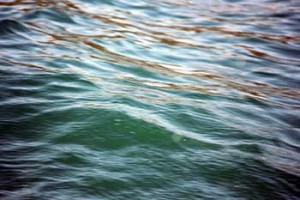
The reaction to the recent announcement by the U.S. Environmental Protection Agency (EPA) that it would publish as final the controversial “Waters of the U.S.” (WOTUS) regulations has been immediate and negative. The regulations are opposed by green industry groups, such as and the National Association of Landscape Professionals (NALP) and AmericanHort.
Some of this reaction is simply overblown, such as the assertion by NALP that the new regulations could require homeowners and landscape contractors to obtain a federal permit to plant a tree or clean debris from a ditch. Neither of these is a requirement of the new reg, nor are they implied by what new reg says.
My opinion is the new WOTUS regulations are a logical and necessary approach to protecting the quality of the nation’s streams, rivers, lakes and groundwater.
Water resources are an integrated system
The new WOTUS reg recognizes that this country’s water resources are an integrated system that must be managed as system. You cannot protect the water quality of a river if you cannot protect the streams that feed it. What happens in the headwaters of our rivers and streams greatly influences water quality downstream in those rivers and streams. You may have heard the saying, “We all live downstream.” Pollution that happens up stream is inevitably carried downstream.
The importance of ground water
In many areas of the country, groundwater is an essential source of drinking and irrigation water. In Pennsylvania, for example, half of our drinking water comes from groundwater sources via wells.
Rivers and streams depend on groundwater for about 40 percent of their flow, according to the U.S. Geological Survey. During times of drought, many streams depend upon groundwater for all of their flow.
Land and water quality
We’re beginning to understand the complex relationship between the land and water quality. We’ve long known about the negative impacts that poorly managed agricultural operations can have on both ground and stream water quality. We’re now beginning to understand how land uses in our urban areas affect stormwater runoff and stormwater’s impact on stream and river water quality.
Just a ditch
For nearly nine years of my career, I worked for the Pennsylvania Department of Environmental Resources (now the Department of Environmental Protection). My last four years at the department were spent as deputy secretary for field operations, which put me in charge of the implementation and enforcement of all environmental regulatory programs in the state: air, water, solid waste and more.
Many of the enforcement cases we handled during that time involved the dumping of pollutants in what someone thought was “just a ditch.” Those pollutants would poison fish in adjacent streams and contaminate surrounding drinking water wells. To me, this example underscores the fact that our water resources are all interconnected. Pollution that happens on the land, in a wetland, in the stream or in groundwater will spread to other parts of the system.
Pennsylvania’s WOTUS
As I have mentioned in my other columns on WOTUS (here and here), since 1937 Pennsylvania has had a legal system similar to the Waters of the U.S. regulation for protecting its water resources. Our pioneering Clean Streams Law defines the term “Waters of the Commonwealth:”
“Waters of the Commonwealth” shall be construed to include any and all rivers, streams, creeks, rivulets, impoundments, ditches, water courses, storm sewers, lakes, dammed water, ponds, springs and all other bodies or channels of conveyance of surface and underground water, or parts thereof, whether natural or artificial, within or on the boundaries of this Commonwealth. (Article I, Section 1, Pennsylvania Clean Streams Law, 1937, as amended.)
This law has allowed Pennsylvania to clean up and protect its water resources for the past 78 years. But even though the law explicitly defines ditches as “Waters of the Commonwealth,” we can still plant trees and clean ditches without a permit!
I consider our industry stewards of the managed landscape. As such, our positions should be considered in the context of the broader environment, based on reason and backed by science. I urge our green industry associations to take another look at WOTUS from the perspective of states that have had experience with similar definitions of their waters.

